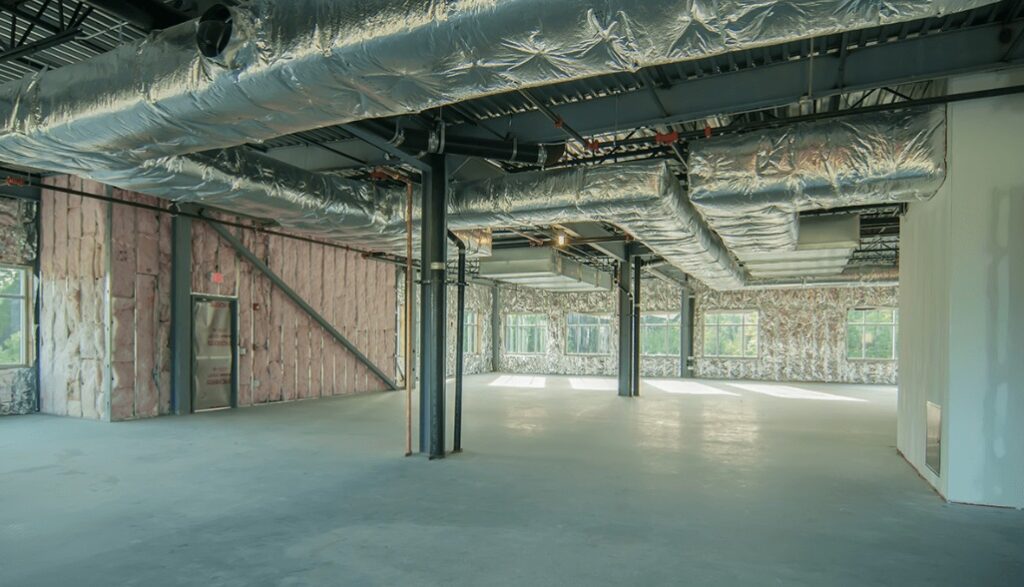When it comes to protecting your home or business, fire safety should always be a top priority. One of the most effective ways to enhance this protection is through the use of fireproof insulation. This innovative material not only helps keep temperatures stable but also provides an essential barrier against potential flames. Whether you’re renovating, building from scratch, or simply looking to improve your existing space, understanding fireproof insulation can make all the difference.
Acusfoc, a company that applies and certifies fireproof insulation solutions in Valencia , will provide the option that best meets the requirements for compliance with the Technical Building Code (CTE) and the Fire Safety Regulations in Industrial Establishments.
Types of Fireproof Insulation
Fireproof insulation comes in various types, each designed to enhance safety while providing thermal efficiency.
Mineral wool is a popular option. Made from natural or recycled materials, it resists fire and moisture. Its high melting point makes it ideal for walls and ceilings.
Another common type is fiberglass insulation. Though not inherently fireproof, treated fiberglass can withstand significant heat without igniting. It’s lightweight and easy to install, making it a favorite among homeowners.
Spray foam insulation also deserves mention. This versatile material expands upon application, filling gaps effectively. Certain formulations offer fire-resistant properties that improve overall safety.
There are specialized boards like calcium silicate which provide exceptional fire resistance along with structural support. These boards are often used in commercial buildings where strict codes must be met.
Choosing the right type depends on your specific needs and building codes in your area.
Benefits of Installing Fireproof Insulation
Installing fireproof insulation offers numerous advantages that go beyond mere safety. One of the primary benefits is enhanced protection against fire hazards. This type of insulation can significantly slow down the spread of flames, giving occupants precious time to evacuate.
Another key advantage is energy efficiency. Fireproof materials often have excellent thermal properties, which help maintain consistent indoor temperatures. This leads to reduced heating and cooling costs over time.
Noise reduction is another benefit worth mentioning. Fireproof insulation can effectively dampen sound transmission between rooms, creating a quieter living environment.
Additionally, many fire-resistant products are eco-friendly options made from sustainable materials. By choosing these types of insulation, homeowners contribute positively to environmental sustainability while ensuring their property’s safety.
Installing fireproof insulation might also enhance your home’s resale value by adding an extra layer of security and comfort for potential buyers looking for safer homes.
Factors to Consider Before Installing Fireproof Insulation
Before diving into fireproof insulation installation, several factors need consideration. First, assess your local building codes and regulations. Compliance is crucial for safety and legality.
Next, evaluate the type of structure you’re working with. Different materials may require specific types of fireproof insulation to achieve optimal results.
Consider the climate as well. Insulation effectiveness can vary based on temperature extremes and humidity levels in your region.
Budget also plays a vital role. Fireproof insulation might have higher upfront costs but could save money in the long run through reduced insurance premiums or energy bills.
Think about future renovations or expansions. Choose an insulation solution that will adapt easily to changes without compromising its protective qualities.
Step-by-Step Guide to Installing Fireproof Insulation
Installing fireproof insulation can be a straightforward process when you break it down into manageable steps.
Start by gathering your materials. You’ll need fire-resistant insulation, a utility knife, safety goggles, and gloves.
Next, measure the space where you’ll install the insulation. Accurate measurements ensure that you purchase the right amount of material.
Cut the insulation to fit snugly between studs or joists. Precision is key for effective coverage.
Now, place the cut pieces in their designated areas. Ensure they sit flush against surfaces to avoid gaps that could compromise performance.
Secure your insulation with appropriate fasteners if needed. This helps maintain its position over time.
Seal any edges or seams with tape designed for fireproof applications. Proper sealing enhances thermal efficiency and provides an additional layer of protection against flames.
Maintenance and Care for Fireproof Insulation
Maintaining fireproof insulation is essential for its effectiveness. Regular inspections can help identify any signs of wear or damage. Look for areas where the insulation may have sagged or compressed, as this can reduce its protective qualities.
Keep an eye on moisture levels too. Water intrusion can compromise the integrity of fireproof materials. If you notice damp spots, address them immediately to prevent further issues.
Cleaning around the insulation is equally important. Dust and debris accumulation can hinder airflow and create potential hazards. Use a soft brush or vacuum with appropriate attachments to gently remove any buildup.
Consult with professionals if you’re unsure about maintenance practices. They can provide insight tailored to your specific installation type, ensuring that your fireproof insulation remains effective over time without compromising safety standards.
Conclusion
Fireproof insulation is a vital component in safeguarding your home or building from fire hazards. It not only protects structures but also provides peace of mind for occupants. By understanding the available types and their unique benefits, you can choose the right material to fit your needs.
Before embarking on an installation journey, weighing various factors such as fire ratings, cost, and installation methods is crucial. This helps ensure that you make an informed decision tailored to your specific environment.
Installing fireproof insulation may seem daunting at first. However, with a clear step-by-step approach and attention to detail, it becomes manageable even for DIY enthusiasts. Regular maintenance will further enhance its effectiveness over time.
Choosing fireproof insulation is more than just a safety measure; it’s an investment in long-term protection for your property. With careful planning and execution, you create a safer space while potentially increasing energy efficiency too. Make sure you’re equipped with the right knowledge before starting this important project—your future self will thank you!

